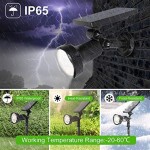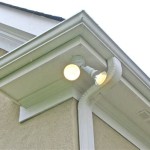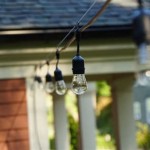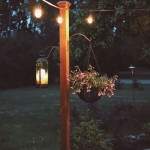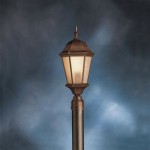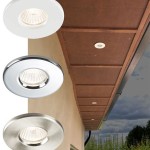Do You Need a Permit for an Outdoor Fireplace?
The allure of an outdoor fireplace is undeniable. It provides warmth, ambiance, and a focal point for social gatherings, extending the usability of outdoor spaces well beyond the warmer months. However, before embarking on the project of installing an outdoor fireplace, it is crucial to investigate the regulatory landscape and determine whether a permit is required. Neglecting this step can lead to costly fines, forced removal of the structure, and significant delays. This article aims to provide a comprehensive overview of the permitting process for outdoor fireplaces, highlighting key considerations and potential variations across jurisdictions.
Permitting requirements for outdoor fireplaces are not universally standardized. They are highly localized, varying based on city, county, and even homeowner association rules. This localized control reflects the diversity of environmental concerns, fire risks, and community standards across different regions. Factors influencing these regulations include the density of housing, prevailing wind patterns, proximity to flammable vegetation, and local air quality standards. Therefore, generalized advice is insufficient; prospective owners must conduct thorough research specific to their location.
The definition of an "outdoor fireplace" itself can be subject to interpretation, impacting permitting necessities. A simple fire pit, for instance, might be subject to fewer regulations than a permanently constructed, brick-or-stone fireplace with a chimney. Considerations such as fuel type (wood, gas, propane), size, and whether the structure is fixed or portable all influence the categorization and, consequently, the permitting process. Understanding precisely how the local authorities define an outdoor fireplace is the first step in determining applicable regulations.
Enforcement of these regulations also varies widely. Some jurisdictions have proactive inspection programs, while others rely primarily on complaint-driven enforcement. However, even in areas with seemingly lax enforcement, failing to obtain the necessary permits can lead to significant problems if a neighbor complains or if the unpermitted structure is discovered during a property sale or insurance claim.
Understanding Local Building Codes and Zoning Regulations
The foundation of outdoor fireplace permitting lies in local building codes and zoning regulations. Building codes primarily focus on the structural safety and fire resistance of the fireplace itself. They specify requirements for materials, construction methods, chimney height, and clearances from combustible materials like wood siding and roofing. These codes aim to minimize the risk of fires spreading from the fireplace to nearby structures.
Zoning regulations, on the other hand, address land use and development. They may dictate where an outdoor fireplace can be located on a property, setting restrictions on setbacks from property lines, easements, and other structures. Zoning ordinances often include height restrictions and may specify allowable uses within particular zoning districts. For example, an outdoor fireplace might be permitted in a residential zone but prohibited in a commercial or industrial area.
To access the relevant building codes and zoning regulations for a specific location, contacting the local building department or planning department is the most direct approach. These departments typically have websites with downloadable documents or can provide hard copies upon request. Consulting with a local building inspector before starting construction is highly recommended. Inspectors can provide clarification on specific code requirements and offer guidance on ensuring compliance. Some jurisdictions also offer pre-construction plan review services, which can identify potential issues early in the process and prevent costly rework later.
It's not uncommon for building codes to reference national standards, such as those published by the International Code Council (ICC) or the National Fire Protection Association (NFPA). While these standards are not legally binding on their own, they are often adopted by reference into local codes, making them enforceable legal requirements. Familiarity with these standards can provide valuable insight into the underlying principles guiding local regulations.
Homeowner associations (HOAs) can impose additional layers of regulation beyond those established by local governments. HOA covenants and restrictions often address aesthetic considerations, such as the appearance and location of outdoor structures. Before building an outdoor fireplace, it's essential to review HOA documents and obtain approval from the association. Failure to do so can result in fines and demands to remove the structure. These HOA rules can be even stricter than city regulations, particularly concerning design standards or limitations on smoke production.
Navigating the Permit Application Process
Once the applicable regulations are identified, the next step is to navigate the permit application process. This typically involves submitting a detailed application to the local building department, along with supporting documentation such as site plans, construction drawings, and product specifications. The site plan should accurately depict the location of the proposed fireplace relative to property lines, existing structures, and other relevant features.
Construction drawings should provide a clear and comprehensive illustration of the fireplace's design, including dimensions, materials, and construction methods. These drawings should be prepared by a qualified professional, such as an architect or engineer, particularly for complex or custom-designed fireplaces. Product specifications should detail the technical characteristics of any pre-fabricated components used in the fireplace, such as fireboxes or gas burners.
The permit application will typically require information about the property owner, the contractor (if applicable), and the project itself. It's crucial to provide accurate and complete information to avoid delays or rejection of the application. Some jurisdictions require specific licenses or certifications for contractors performing fireplace installations. Verifying that the contractor is properly licensed and insured is an essential step in protecting oneself from liability.
After submitting the application, it will be reviewed by building department staff to ensure compliance with applicable codes and regulations. This review process can take several weeks or even months, depending on the complexity of the project and the backlog of applications. During the review, the building department may request additional information or revisions to the plans. Responding promptly and thoroughly to these requests is crucial to keeping the application moving forward.
Once the application is approved, a building permit will be issued. The permit typically requires posting on the property during construction and mandates inspections at various stages of the project. These inspections are conducted by building inspectors to verify that the construction conforms to the approved plans and complies with all applicable codes. Common inspection points include site preparation, foundation construction, framing, chimney installation, and final completion. Failing an inspection can result in delays and require corrective action before proceeding with the project. A final inspection is usually required before the fireplace can be used.
Considerations for Different Fuel Types and Fireplace Designs
The type of fuel used in the outdoor fireplace—whether wood, gas, or propane—significantly influences permitting requirements. Wood-burning fireplaces often face stricter regulations due to concerns about smoke emissions and the potential for wildfires. Some jurisdictions may restrict wood burning during certain times of the year or require the use of specific types of wood to minimize air pollution. Spark arrestors are often mandated to prevent embers from escaping the chimney and causing fires.
Gas-burning and propane fireplaces typically require permits for the gas line installation. These permits ensure that the gas piping is installed safely and complies with relevant codes. A licensed plumber or gas fitter is usually required to perform the gas line installation. Inspections are conducted to verify the integrity of the gas connections and to ensure that there are no leaks. Additionally, the size and BTU rating of the gas burner may be subject to limitations based on local air quality standards.
The design of the outdoor fireplace also affects permitting requirements. Permanently constructed fireplaces generally require more extensive permitting than portable fire pits. Considerations such as chimney height, firebox size, and proximity to combustible materials will be carefully scrutinized during the permit review process. Custom-designed fireplaces often require detailed engineering calculations to ensure structural stability and fire safety. Pre-fabricated fireplaces that have been tested and listed by a recognized testing laboratory may be subject to fewer permitting requirements, as they have already undergone rigorous safety evaluations. However, even with pre-fabricated units, proper installation is crucial to ensure compliance with local codes.
The presence of an existing structure, such as a deck or patio, can complicate the permitting process. Building codes often specify minimum clearances between fireplaces and these structures to prevent fire hazards. If the fireplace is being integrated into an existing structure, modifications may be required to ensure compliance with code requirements. In some cases, a separate permit may be needed for the deck or patio itself.
In summary, navigating the permitting process for an outdoor fireplace requires careful research, thorough preparation, and diligent compliance with local regulations. Understanding the specific requirements applicable to one's location, fuel type, and fireplace design is essential to avoiding costly delays and ensuring a safe and enjoyable outdoor living space. Consulting with local building officials, qualified contractors, and design professionals can provide invaluable assistance throughout the process.

All About Backyard Outdoor Fireplaces Vanderwall
City Of Moorhead Recreational Fires

Do You Need A Permit To Build Fire Pit Countyoffice Org

Your Guide To Safe Outdoor Fires On Property Clarington

Can I Have A Fire Pit In My Backyard Laws Restrictions By State Outland Living

How Much Do Outdoor Fireplaces Cost Trevor S Landscaping

Burn Permit

Outdoor Fireplaces Keep You Warm In All Seasons Hearthside

Do I Need A Permit For Fire Pit In Randolph Massachusetts Jm Mento Landscape Design

How Much Does It Cost To Build An Outdoor Fireplace Key Factors The Torch Guys
Related Posts
